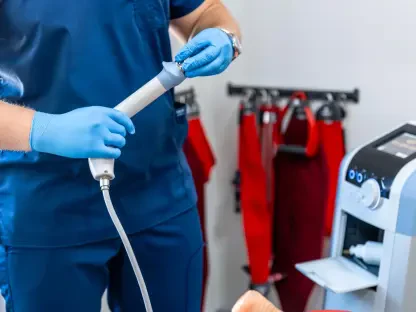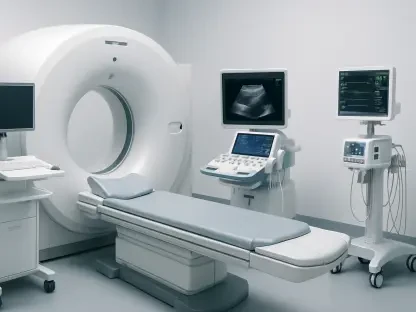Imagine a scenario where a hidden ailment lurks inside the body, undetected by the naked eye, yet a simple, noninvasive scan reveals it just in time to save a life, showcasing the remarkable reality of diagnostic imaging. This field has become a linchpin of modern healthcare by enabling doctors to visualize internal structures with stunning clarity. These technologies not only aid in identifying issues like fractures or tumors before they escalate but also guide precise treatments, reducing the need for invasive procedures. For anyone navigating health concerns or simply seeking to stay informed, understanding the array of imaging tools available can be a game-changer. This exploration delves into 12 critical diagnostic imaging tests, shedding light on their unique purposes and their indispensable role in today’s medical landscape. By grasping how these tests function, patients and caregivers alike can better appreciate the importance of professional diagnostics in ensuring timely and effective care.
The Transformative Power of Diagnostic Imaging
Diagnostic imaging stands as a revolutionary force in medicine, fundamentally altering the approach to diagnosing and managing countless conditions. By providing a detailed glimpse inside the body without the need for surgical intervention, these tests have slashed the risks associated with exploratory procedures while boosting accuracy. Early detection of diseases—be it cancer, heart issues, or bone deterioration—often hinges on the use of such advanced tools, paving the way for treatments that can halt progression in its tracks. Unlike speculative guesses or unverified online information, imaging delivers concrete data that medical professionals rely on to craft tailored care plans. This shift toward precision medicine underscores why familiarity with these technologies is vital for anyone engaging with the healthcare system, ensuring that decisions are grounded in science rather than uncertainty.
Moreover, the evolution of imaging technology continues to push boundaries, making diagnostics faster, safer, and more accessible than ever. Innovations have led to reduced radiation exposure in many scans, while enhanced resolution offers unprecedented detail in identifying subtle abnormalities. The impact is clear: patients benefit from quicker diagnoses, often avoiding the anxiety of prolonged uncertainty, and doctors gain confidence in their assessments. This progress also reflects a broader trend in healthcare toward patient-centered approaches, where minimizing discomfort and maximizing outcomes are paramount. As imaging becomes increasingly integrated into routine care, its role in preventive health strategies grows, catching potential issues before symptoms even arise. Understanding this dynamic landscape helps demystify medical processes, empowering individuals to advocate for the right tests at the right time.
Unveiling the Core Imaging Technologies
Diving into the specifics, the spectrum of diagnostic imaging encompasses a variety of tests, each designed to address distinct health concerns with remarkable precision. Foundational tools like X-rays remain a go-to for visualizing bone fractures or detecting lung infections, while ultrasounds offer a radiation-free method to monitor pregnancies or examine abdominal organs. More sophisticated options, such as Magnetic Resonance Imaging (MRI), utilize magnetic fields to produce detailed images of soft tissues, making them invaluable for brain or joint assessments. Computed Tomography (CT) scans, on the other hand, provide cross-sectional views ideal for spotting tumors or internal injuries. These tests, among others, form a comprehensive toolkit that medical professionals draw upon to ensure no stone is left unturned in the diagnostic process.
Beyond the basics, specialized imaging modalities cater to niche but critical needs, enhancing the ability to pinpoint specific conditions. Mammography, including its contrast-enhanced variant, plays a pivotal role in breast cancer screening, often detecting abnormalities before they can be felt. Echocardiograms and Electrocardiograms (EKG) focus on heart health, with the former using sound waves to assess structure and the latter tracking electrical activity for rhythm issues. Tests like Dual-Energy X-ray Absorptiometry (DEXA) are tailored for evaluating bone density, crucial in diagnosing osteoporosis. Each of these technologies brings a unique strength to the table, ensuring that whether the concern is skeletal, cardiac, or oncological, there’s a method to illuminate the problem with clarity and guide the next steps in care.
Advanced Insights Through Functional and Procedural Imaging
Some diagnostic tools transcend static images, offering dynamic insights into how the body operates, which is essential for complex conditions. Nuclear Stress Testing, for instance, evaluates blood flow to the heart by introducing a radioactive tracer, often revealing coronary artery disease that static images might miss. Positron Emission Tomography (PET) scans similarly use tracers to assess organ function, proving indispensable in cancer staging or neurological evaluations. These functional tests provide a deeper understanding of physiological processes, allowing doctors to not only see structural issues but also gauge how well systems are performing. This dual perspective often shapes more effective treatment strategies, addressing root causes rather than just symptoms.
Equally compelling is the realm of Interventional Radiology, a hybrid field where imaging meets minimally invasive treatment, transforming patient care. By guiding procedures with real-time visuals, this approach tackles issues like blocked blood vessels or tumors without the need for major surgery, significantly reducing recovery times and risks. Stereotactic Breast Biopsy, another targeted technique, uses X-ray guidance to precisely sample suspicious breast tissue, aiding in cancer diagnosis with minimal discomfort. These advancements highlight a shift toward integrating diagnostics and therapy, streamlining the journey from detection to resolution. As such technologies become more widespread, they underscore the importance of accessing facilities equipped to deliver both cutting-edge imaging and procedural expertise.
Navigating the Pitfalls of Self-Diagnosis
In an era where information is just a click away, the temptation to self-diagnose based on internet searches poses a significant risk to health outcomes. Misinterpreting symptoms or relying on unverified sources can lead to delayed treatment, unnecessary stress, or even harmful self-medication, often exacerbating the underlying issue. Diagnostic imaging, supported by trained medical professionals, stands as a stark contrast, offering reliable, evidence-based answers that cut through the noise of online speculation. The precision of these tests ensures that conditions are identified accurately, preventing the spiral of misinformation that can derail proper care. This distinction highlights why seeking professional evaluation is not just advisable but essential in today’s information-saturated environment.
Furthermore, the infrastructure behind diagnostic imaging reinforces trust in medical systems, providing a safeguard against the uncertainties of self-reliant approaches. Accredited facilities adhere to rigorous standards, ensuring that equipment is up-to-date and staff are expertly trained to interpret results. This level of oversight is something no online forum can replicate, as it combines technological precision with human judgment to deliver diagnoses that are both accurate and actionable. For those hesitant to consult a doctor due to fear or doubt, understanding the credibility and safety of imaging processes can be a reassuring step. It’s a reminder that true peace of mind comes from proven methods, not from the fleeting reassurance of a web search, emphasizing the need to prioritize professional input over digital guesswork.
Securing Access to Reliable Imaging Services
Knowing about diagnostic imaging tests is only part of the equation; accessing them through trusted providers completes the picture of effective healthcare. In regions like Brevard County, Florida, facilities such as Parrish Healthcare offer a broad range of imaging services, from routine X-rays to advanced PET/CT scans, ensuring comprehensive care under one roof. With multiple locations equipped to handle diverse needs, patients can schedule appointments or even opt for walk-in services for certain tests, streamlining the process of getting evaluated. Accreditation by bodies like the American College of Radiology further guarantees that the quality of care meets stringent standards, providing confidence that results are both dependable and safe for guiding medical decisions.
Additionally, the commitment to patient-centered care at such facilities enhances the overall experience, making diagnostic imaging less daunting for those unfamiliar with the process. Staff are often trained to explain procedures in clear terms, addressing concerns and ensuring comfort during tests like MRI or mammography, which can sometimes feel intimidating. This focus on accessibility and support reflects a broader movement in healthcare to empower patients through education and ease of access. For anyone considering a diagnostic test, identifying a reputable provider with a proven track record is a crucial step, as it ensures that the journey from suspicion to solution is handled with expertise and care, ultimately safeguarding health with precision and reliability.
Reflecting on the Path Forward for Health Diagnostics
Looking back, the strides made in diagnostic imaging over recent decades have reshaped how medical challenges are approached, turning once-intrusive explorations into routine, noninvasive checks. Each of the 12 pivotal tests discussed plays a part in this shift, offering tailored solutions that address everything from bone health to cancer detection with unmatched accuracy. The emphasis on professional evaluation over self-diagnosis stands as a critical lesson, highlighting how accredited facilities provide a bulwark against the risks of misinformation. As these technologies are embraced, they not only improve outcomes but also build trust in systematic healthcare. Moving forward, the focus should rest on expanding access to such services, ensuring that advancements in imaging reach underserved communities. Exploring partnerships with local providers and advocating for awareness can bridge gaps, making sure that the benefits of early detection and precise diagnosis touch every corner of society.









